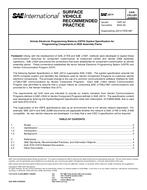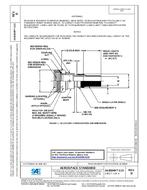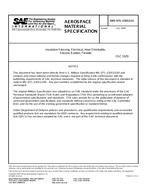Click here to purchase
This document reviews the state of the art for data scaling issues associated with air induction system development for turbine-engine-powered aircraft. In particular, the document addresses issues with obtaining high quality aerodynamic data when testing inlets. These data are used in performance and inlet-engine compatibility analyses. Examples of such data are: inlet recovery, inlet turbulence, and steady-state and dynamic total-pressure inlet distortion indices. Achieving full-scale inlet/engine compatibility requires a deep understanding of three areas: 1) geometric scaling fidelity (referred to here as just “scaling”), 2) impact of Reynolds number, and 3) ground and flight-test techniques (including relevant environment simulation, data acquisition, and data reduction practices). The Model-to-Full Scale Subcommittee of the S- 16 Turbine Engine Inlet Flow Distortion Committee has examined archives and has obtained recollections of experts regarding air induction system development experience to produce this document.The primary objective of this document is to provide a consolidated record of what is known regarding the effectiveness of wind-tunnel scale-model testing in the prediction of full-scale flight characteristics such as inlet recovery, inlet turbulence, and steady-state and dynamic total-pressure inlet distortion. Discussion is offered regarding these findings in light of our current knowledge and understanding. Based on this discussion material, the SAE S-16 Committee has been able to achieve consensus on lessons learned and to provide recommendations.
Product Details
- Published:
- 09/06/2011
- File Size:
- 1 file , 2.9 MB


